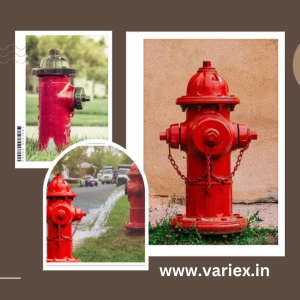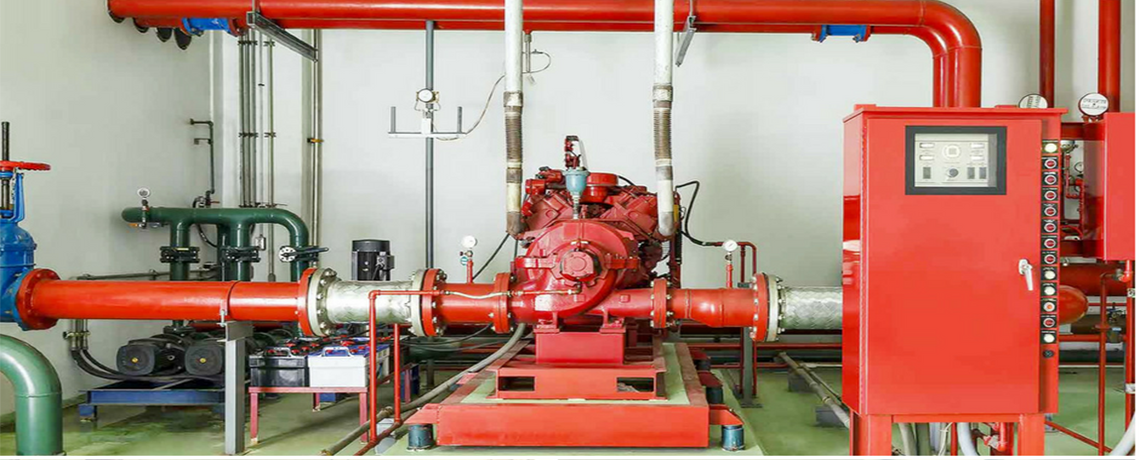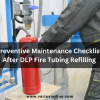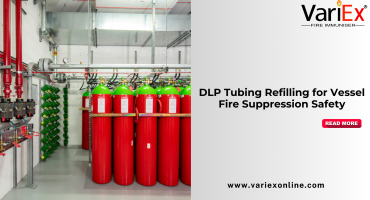![]()
Fire Immuniser
+91-7829629111
Email: info@variex.in
Varistor Technologies Pvt. Ltd.
Block-1, First Floor, Ardente Office One, Hoodi Circle, ITPL Main Road, Bengaluru, Karnataka 560048, IN
How To Calculate Pump Capacity For Fire Hydrant System
Determining the pump capacity for a fire hydrant system is essential to ensure an adequate supply of water for firefighting operations. Proper calculation considers factors such as water demand, system layout, and pressure requirements. Below is a comprehensive guide on how to calculate pump capacity for a fire hydrant system:
Begin by estimating the maximum water demand required to combat potential fires in the area served by the hydrant system. Factors to consider include building size, occupancy type, fire hazard classification, and local fire code requirements.
2. Determine Required Pressure
Determine the minimum required pressure at the most remote hydrant location in the system. This pressure should be sufficient to deliver water to the highest elevation and farthest distance from the water source while maintaining effective firefighting capabilities.
3. Consider System Layout
Evaluate the layout of the fire hydrant system, including the number and spacing of hydrants, pipe lengths, and elevation changes. Account for friction losses, elevation changes, and other hydraulic factors that affect water flow and pressure throughout the system.
4. Calculate Total Dynamic Head (TDH)
Total Dynamic Head (TDH) represents the sum of all pressure losses in the system, including friction losses in pipes, elevation changes, and losses through fittings and valves. Use hydraulic calculations or software tools to determine TDH accurately.
5. Select Pump Type
Based on the calculated TDH and required flow rate, select a pump type that can deliver the necessary pressure and flow for the fire hydrant system. Common pump types include centrifugal pumps, positive displacement pumps, and turbine pumps.
6. Size the Pump
Size the pump based on the calculated TDH and desired flow rate. Refer to manufacturer specifications and performance curves to select a pump model that meets or exceeds the system requirements while allowing for a safety margin.
7. Consider Backup Systems
Evaluate the need for backup pumps or redundant systems to ensure continuous water supply in the event of pump failure or maintenance. Backup systems may include diesel-powered pumps, electric generators, or gravity-fed reservoirs.
8. Perform Pump Testing
Once the pump is installed, conduct performance testing to verify its capacity and efficiency. Test the pump under various operating conditions, including full load and partial load scenarios, to ensure it meets design requirements.
9. Monitor and Maintain
Regularly monitor the pump performance and conduct routine maintenance to ensure optimal operation. Inspect pumps, motors, valves, and piping for signs of wear, damage, or leaks. Address any issues promptly to prevent system failures during emergencies.
10. Train Personnel
Provide training for personnel responsible for operating and maintaining the pump system. Ensure they understand proper operation procedures, safety protocols, and emergency shutdown procedures to mitigate risks and ensure effective firefighting capabilities.
By following these steps and conducting thorough calculations, fire protection engineers and designers can determine the appropriate pump capacity for fire hydrant systems, ensuring reliable water supply for firefighting operations and enhancing overall fire safety within communities.
Frequently Asked Questions
A fire hydrant system is a network of pipes, valves, and hydrants designed to provide firefighters with immediate access to water for extinguishing fires in urban and suburban areas.
Fire hydrant systems are connected to a pressurized water source, usually the municipal water supply. During a fire emergency, firefighters connect hoses to hydrants, open the valves, and direct pressurized water onto the fire.
A fire hydrant system typically consists of underground pipes, hydrants, valves, hoses, and fittings. These components work together to deliver water to firefighters during emergencies.
Fire hydrants are strategically spaced along streets, sidewalks, or other accessible locations to ensure adequate coverage and quick access for firefighters. Spacing varies based on factors such as building layout and fire risk.
Fire hydrant systems are installed by qualified contractors or construction firms with expertise in plumbing and fire protection systems. Installation must comply with local building codes and regulations.
Final Say
We at VariEx.in or Variexonline.com have mastered the art of designing, installing, inspecting, and fixing automatic sprinkler systems with the help of our in-house team, which is capable of delivering the fire sprinkler services you need, whether large or small and at affordable cost.
To schedule a fire sprinkler installation, or you think our services could benefit your commercial property, contact us online or give us a call at, 7829629111
"WHAT YOU CAN READ NEXT"
 Read more +24 November 2023 in Fire Extinguisher
Read more +24 November 2023 in Fire ExtinguisherWhat types of fire extinguishers are available for different fire classes?
 Read more +11 July 2025 in Fire Suppression
Read more +11 July 2025 in Fire Suppression









we have to install hydrant system in a newly constructed Hotel where 12 hydrants designed for four floors. want to understand which hydrant pump to be given. can you please suggest.
For detailed information on selecting the appropriate hydrant pump for your newly constructed hotel, please contact our expert professionals at 7829629111 or email us at sales@variex.in. They can provide you with comprehensive details about the Fire Hydrant System tailored to your specific needs. Alternatively, you can share your mobile number with us, and our team will reach out to you directly to discuss and explain everything in detail. Thank you!